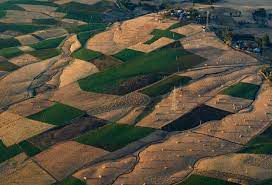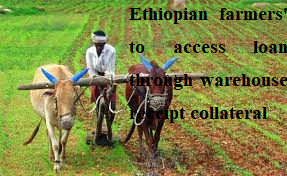BY GETACHEW MINAS
Ethiopia has a wide range of endemic aromatic gums and resins which represent an important economic value for the country. It is the source of frankincense and myrrh that have been valued for their sacred and ceremonial uses as well as medicinal uses since several millennia. Among the most commercially valued species are Gum Arabic and Frankincense. These are found in different geographical zones, where the most commercialized species are located. Myrrh is also endemic to Ethiopia, which includes several varieties. Ethiopia is considered to have a long-established gums and resins sector, with experience in harvesting, grading, trading and exporting. The sector has been recognized for its strong potential for value creation. There is also an opportunity for less commercialized species to be developed and marketed.
Despite its potential for commercial exploitation, the gums and resins sector contribution to the overall annual export is relatively small. Gums and resins contributed to less than one percent of the export earnings of the country. Globally speaking, the economic values of these resources are not well covered or registered. This may be due to the porous borders that are believed to account for at least double the formal sector exports. The informal export of myrrh is believed to be especially rife, rampant and widespread. Furthermore, about half of the total annual production is exchanged for use in the domestic markets, which comprise mainly lower grades of frankincense and myrrh.
Domestic consumption of frankincense is estimated at thousands of tons annually, with around a quarter of it being utilized in the churches. Frankincense and myrrh species are used for fragrance, medication, and therapy. They are harvested, graded, traded and exported. The sector, therefore, should be recognized as a source of foreign exchange. Ethiopia also offers a range of lesser known and less commercialized gums and resins. However, the country is not well known as a resource of gums and resins with certainty. It is reported that there has been reduction in the size of land endowed with gums and resins. This is due to cutting of trees and forests in different parts of the country in order to replace it with cash crops like sesame. The forest-based resource in these areas has not received the protection needed to ensure sustainability levels through responsible forest management.
The production process in gums and resins developed in the recent past has been weak. People are preoccupied with cattle grazing, and used fire for land clearing, which is not compatible with the production of gums and resins. But, in desert and lowlands where it is “difficult” to produce food and cash crops, myrrh and frankincense are harvested extensively. The problems in the desert areas are, however, related to domestic market accessibility for selling gums and resins. Thus, producers find it easier and more expedient to sell their gums and resins to traders who smuggle them out of the country.
Estimate of the areas suitable for dry land forest for the production of gums and resins are quite extensive. The Centre for International Forestry Research (CIFOR) estimates that the potential annual production of gums and resins in Ethiopia could be between 35,000 and 114,000 metric tons, the wide range indicating the lack of reliable data on actual productivity levels. Even at the lower end of the estimates, actual production is significantly lower than the potential, while annual formal exports are about 5,000 tons.
The production and exports of Gum Arabic species seem to be depressed, comprising only a small share in the total output. Yet despite the availability of high quality Gum Arabic in Ethiopia, neighboring countries have firm grip on world trade. Exporters, however, indicate that the volumes of gums and resins available on the Ethiopian market are insufficient to meet export demands. To meet global demand and face competition, Wubalem et al think that it is absolutely necessary to produce gums and resins in large quantity. Quality is also one instrument of competition in meeting price variations. If traders fail to meet the market demand, the gums and resins producers will also be discouraged.
Unlike most of the gums and resins producing countries in the Horn of Africa, Ethiopia has little, if any, capacity for value addition. All Ethiopia’s gums and resins are exported in raw form, without added value. In some cases, grading of raw frankincense takes place in warehouses. There are no formally recognized standards for gums and resins. Actual production depends on the type of gum as well as the place of harvest. Production is seasonal, and takes place in dry season only. Tapping of the gum trees, making incisions in the tree in order to collect the dried “tears” or gums is almost exclusively practiced for frankincense. Myrrh and the other frankincense species are almost exclusively collected in their natural form, without tapping.
Production of frankincense takes place in different ways. Residents tap directly or use labor to produce resin. They also organize cooperatives that produce and sell resins to wholesalers and exporters. This practice helps residents to benefit directly from the resources in the surrounding areas. Experts pointed out that this practice contributes to the preservation of resources through the direct interest of the local residents. This strategy of involving the rural people in the production and marketing of output provides them with the incentive of preserving resources. They may not be attracted to engage in other activities that are economically counter-productive.
The fragmentation of the gums and resins production and marketing, along with the loss of control over the forests has led to concerns over the sustainability and quality of the material exported. The engagement of laborers for taping or the concessions given to firms without limit are the main causes of concerns. Exporters of gums and resins require a reliable supply of raw material of a consistent and predictable quality. But, local producers lack the reputation for producing consistent quality gums and resins. The products have suffered largely due to adulteration of the raw materials. Traders generally do not have the skills or the means to ensure the purity of the raw product offered for sale.
The harvesters/collectors employed may have the incentive to “adulterate” the gums and resins they provide to the traders. This practice of cheating provides them with more money selling certain amount of low quality products. The gums can look similar in color especially to the “untrained eye” and mixing of gums with resins has become relatively common. Adulteration can also affect the quality and yields of the “essential” oils derived from myrrh. However, the adulteration of Gum Arabica with other non-recognized gums is against the standards established by the importing counties.
The absence of commonly accepted standards together with the lack of accredited laboratories for testing gums and resins suggests that this situation is to remain without change. To face this problem, buyers have to press for training and capacity building for ensuring quality during harvest and post-harvest of gums and resins. Furthermore, “traceability” mechanism should be designed for ensuring quality of products. Setting standards, organizing training and capacity programs are good, but they may not necessarily guarantee quality. If those persons assigned to control quality are not “honest,” the whole process ends up in failure.
Currently, there is a need for effective legislation covering the gums and resins sector. Studies show that under the socialist regime, the sector was “controlled” by the state. However, after 1991, following the policy of liberalization the private sector came into the picture. Furthermore, government encouraged productive cash crop schemes in the forest catchment areas, where gums and resins are collected. But, there is a complete disregard to the abundant forest resources, including gums and resins there. Moreover, responsibility for the forest areas and the natural resources in general has been delegated from the Federal to the regional bureaus that are to collect royalty for forest products.
The Ethiopian herald march 11/2021





